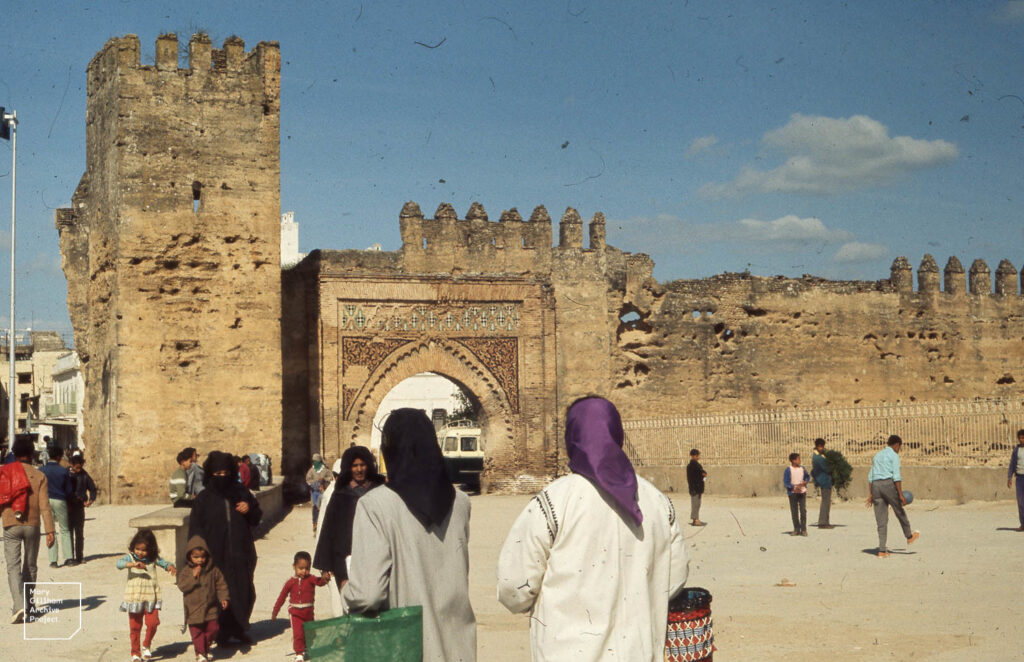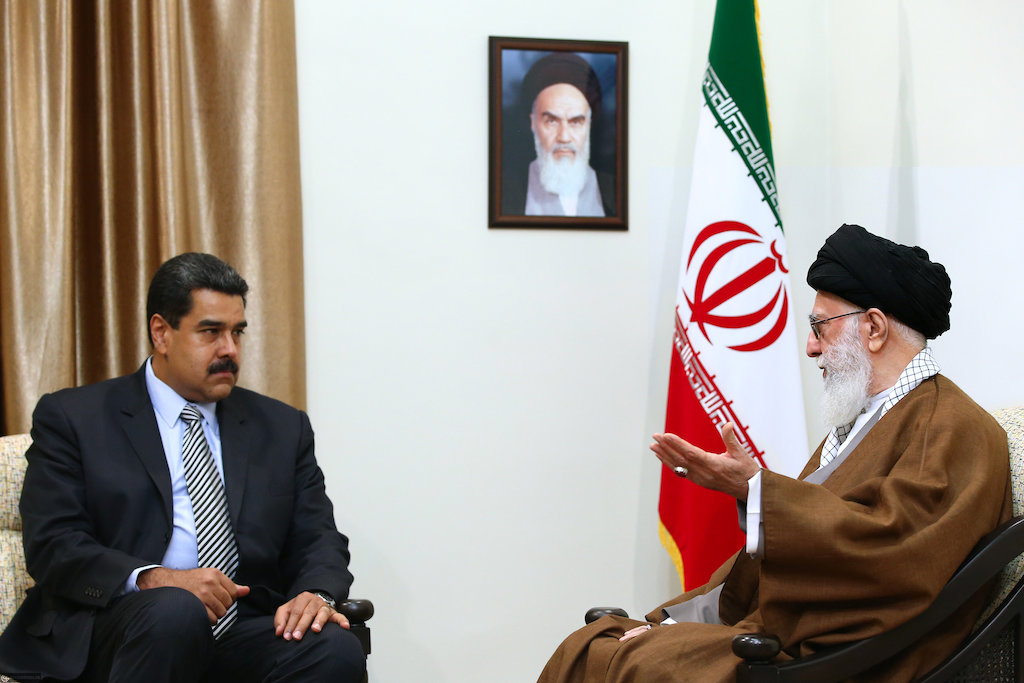FACT SHEETS
Fact Sheet: Gaza’s death toll
August 12, 2025 | AIJAC staff
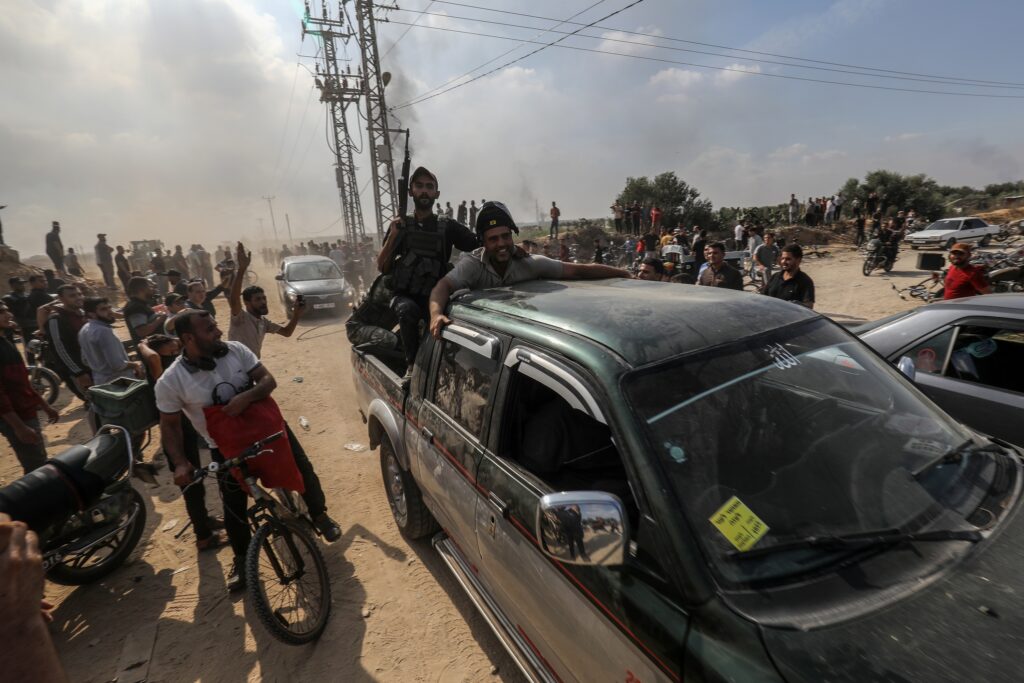
Published 13 May 2025; Updated 12 August 2025
Key points
- There is no international law or standard practice governing how civilian death tolls in wars are counted or estimated
- Hamas has used three different methodologies to count Gaza’s death toll
- Hamas refuses to differentiate between civilians and combatants
- Neither the United Nations nor other organisations have independently verified Hamas’ death toll
- Hamas’ own data shows that more than 70% of Gazans killed during the war and aged between 13 and 55 were male (i.e. men of fighting age)
- The IDF estimates that, as of January 2025, about 20,000 Hamas combatants have been killed in Gaza
Contents
- Summary
- The Hamas-Israel war
- Hamas’ changing death toll methodology
- Changes to Hamas’ death toll
- Claims about women and children killed
- The role of the United Nations
- Number of Hamas terrorists and fighters killed
- Challenges in estimating war death tolls
- Comparison to how the October 7 death toll was confirmed
- Other resources
Summary
There is no international law or universal practice for how civilian or military deaths in war zones should be counted or estimated.
This means that not only is it extremely difficult – if not impossible – to determine death tolls but the process is open to manipulation.
Different methodologies are used by different actors in different wars, with some governments, regimes and activists deliberately overestimating or underestimating the death toll for their own political purposes.
Every civilian who dies in war is a tragedy. While this fact sheet discusses numbers, facts and statistics, we remember that these are real people and mourn their very real suffering.
From the outbreak of the Hamas-Israel war, which started when Hamas terrorists savagely murdered 1,200 Israelis and foreign nationals on October 7, 2023, serious questions have been raised about the accuracy of Gaza’s death toll, which is compiled by the Hamas-run Ministry of Health (MoH).
The difficulty in counting civilian losses is not unique to Gaza; it is a situation that has plagued all previous and current wars, including in Yemen, Sudan and Syria. However, what does make Gaza a unique situation are the extraordinary lengths that Hamas has gone to manipulate the world, including media, human rights groups and activists, governments and charities – and the willingness of those parties to reproduce unverified Hamas statistics, despite those statistics having been proven unreliable on multiple occasions.
Media outlets across the world have mostly reported Hamas-supplied death tolls without questioning their source or validity.
Until mid-May 2025, Hamas’ MoH had insisted that approximately 70% of those killed in Gaza were women and children, a point rarely challenged or refuted by governments, NGOs and charities.
However, an April 2025 analysis of Hamas’ own data revealed that, despite consistent reports to the contrary, 72% of recorded deaths of people aged between 13 and 55 were males, with the highest death rates being men aged between 20 and 40.
The Hamas-Israel war
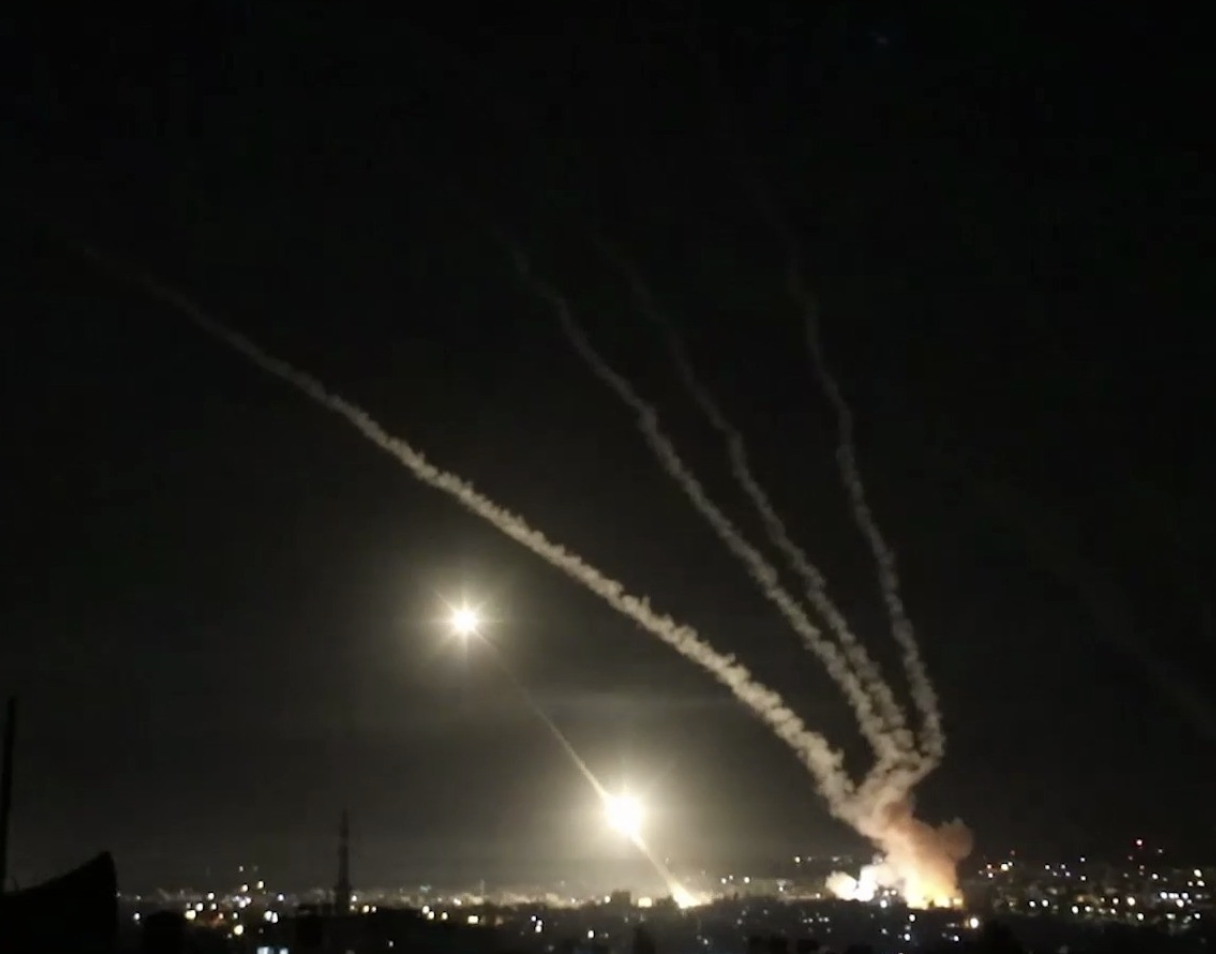
Hamas has fired thousands of rockets at civilian areas across Israel (Image: Flickr)
On October 7, 2023, thousands of Hamas terrorists invaded southern Israel in a well-planned and coordinated attack that resulted in the mass murder, rape and torture of just under 1,200 women, men and children. It was the worst mass killing of Jews since the Holocaust.
A further 251 people – including babies and Holocaust survivors – were kidnapped and taken into Gaza. As of August 2025, 49 people remain in captivity, of whom only 20 are believed to still be alive. (See this AIJAC fact sheet about the hostages.)
The Israel Defence Force (IDF) responded with air-strikes targeting Hamas operatives and fighters in Gaza, followed by a ground operation commencing on October 27, 2023. There have been two ceasefires, allowing for a total of 135 live hostages to be released, in exchange for 1,240 Palestinian prisoners and detainees. Additionally, four hostages were released unilaterally by Hamas in 2023, and Israel has rescued eight. An American-Israeli hostage was released in May 2025. The bodies of 44 hostages have also been returned to Israel.
Read more: “Lies, damned lies and statistics” in Gaza
Hamas’ changing death toll methodology
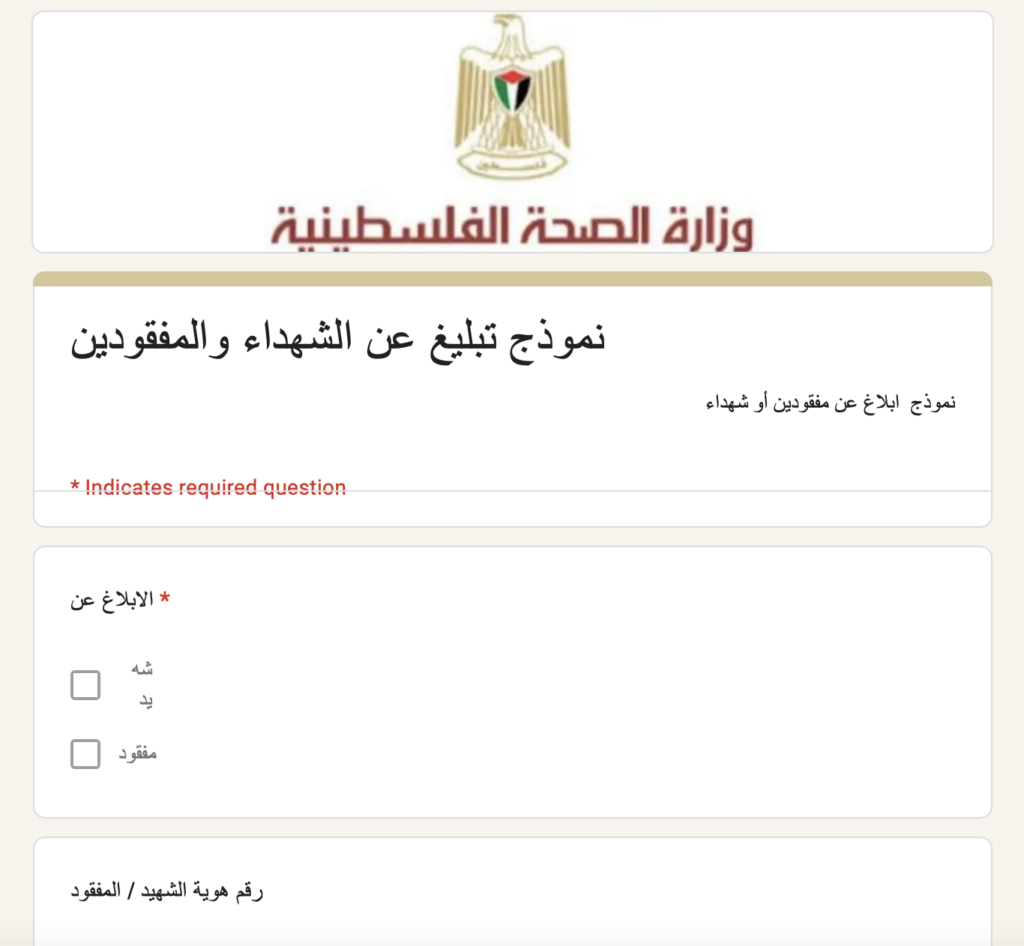
Hamas uses a Google Doc for Gazans to report to the death toll (Image: screenshot)
As of August 2025, the Hamas-run Ministry of Health (MOH) claimed that 61,000 Palestinians had been killed in fighting in Gaza since the outbreak of the war. The death toll provided by Hamas has been challenged by multiple parties, including the IDF, academics, governments, NGOs and charities across the world.
Hamas has never differentiated between civilians and combatant deaths. Hamas’ death toll also includes Palestinians killed by Hamas whose deaths were wrongly attributed to the IDF, and is also believed to include Gazans who died of natural causes unrelated to the war. Hamas’ MoH official death toll methodologies and data all claim that all Gazan deaths are to be blamed on the IDF.
It is also important to note that Hamas has long purposefully risked civilian lives as part of its war strategy, embedding its fighters amongst civilians, and admits that it does this, terming those civilians killed “necessary sacrifices.” In June 2024, The Washington Post published messages from then-Hamas leader Yahya Sinwar, who admitted that the rising death toll could benefit the terrorist group. “We have the Israelis right where we want them,” Sinwar told other Hamas leaders in one of the messages.
Hamas’ MoH publishes its death toll data in two formats: regular statistical fatality reports and infrequent lists of named individuals. Between December 2023 and May 2025, Hamas’ MoH also released 77 additional ‘public health emergency reports’ which contained more details.
There are actually two separate Hamas-run departments that make claims about the Gaza death toll – its MoH and its Government Media Office (GMO). However, the data released from each department has always featured significant discrepancies. The latter provides death toll data to media outlets across the world, governments and the UN, and that data cannot be reconciled with data provided by the former. Data from the GMO is completely false.
Hamas’ MoH has used three different methodologies to calculate/estimate the death toll in Gaza and revised one methodology eight times. In the first month of the war, Hamas primarily relied on data from hospitals and morgues to record deaths. During previous Hamas-Israel conflicts – which were significantly shorter and smaller in scale – this data was independently checked and verified in real time by third parties, such as the UN’s Office for the Coordination of Humanitarian Affairs and independent NGOs. That independent verification also distinguished between civilian and combatant casualties.
This third-party, real-time verification system has not occurred at any time during this current war.
Then, in early November 2023, Hamas added a new, less defined methodology – relying on media reports. Media reports are widely regarded as a poor choice because of the lack of detail and the extreme difficulty in verifying the information published.
According to a March 2024 comparison study of the first two methodologies by the Washington Institute for Near East Policy, these two methodological approaches
yield wildly different and irreconcilable results, indicating that the media reports methodology is dramatically understating fatalities among adult males, the demographic most likely to be combatants. This undercuts the persistent claim that 72 percent of those killed in Gaza are women and children—a problem that has worsened since it was first noted by a Washington Institute report in January [2024].
In January 2024, Hamas added a third methodology; using an unsecured Google Doc for family and friends to self-report those reportedly killed. This Google Doc had no security features whatsoever – anyone across the world with the link could fill it out.
Hamas has made several revisions to the Google Doc during the war, such as requiring different information; some versions required two witnesses, while others only required the applicant’s own information. Another change was to allow applicants to report deaths from natural causes.
The reporting process was moved from Google Docs in May 2024 to an online portal on the MoH’s user website sehatty.ps; this portal is also unsecured and can be accessed by anyone in the world with the link.
A UK study released in April 2024 revealed that approximately 40% of Hamas’ reported death toll came from methodologies that didn’t involve the physical identification of a body, meaning there was likely an overlap with those reported missing. This coincides with a lowering in the threshold for reporting quality; previously, only “reliable information sources” were accepted, but that was changed to allow “records with incomplete data.”
For much of the war, Hamas’ MoH combined all three methodologies in order to create its purported death toll, but has since combined two methodologies – the hospital/morgue system and self-reporting online portal – to create one single death toll.
It is unclear whether Hamas is counting missing people separately; one MoH report, released in December 2024, indicated that 886 people were missing. However, it is possible that some people reported dead could in fact be missing. Given that there is an option to report someone is dead but “under the rubble,” without citing a body, there is the possibility for double-counting if/when the body is recovered.
Across its various methodologies, Hamas has split its claimed casualties between “identified” and “unidentified”, with the latter category responsible for most of the statistical irregularities, according to computer scientist and data analyst, Mark Zlochin. However, already last year the evidence revealed that even “identified” casualty lists were plagued by errors and duplicate entries.
In addition, Hamas fighters and other combatant deaths are being widely under-reported via the two methodologies that Hamas’ MoH is using, allegedly due in part to fear of Hamas retaliation. And even when they are reported, many Hamas combatants’ names have been removed. To complicate matters further, Hamas fighters and combatants often dress in civilian clothing, making it even more difficult for researchers to determine how many male casualties are civilians.
According to a May 2025 review of Hamas’ MoH methodologies, Hamas is now relying primarily on the hospital and morgue system, also known as the central collection system.
Read more: Citing Hamas’ Gaza casualty claims amounts to journalistic malpractice
Changes to Hamas’ death toll
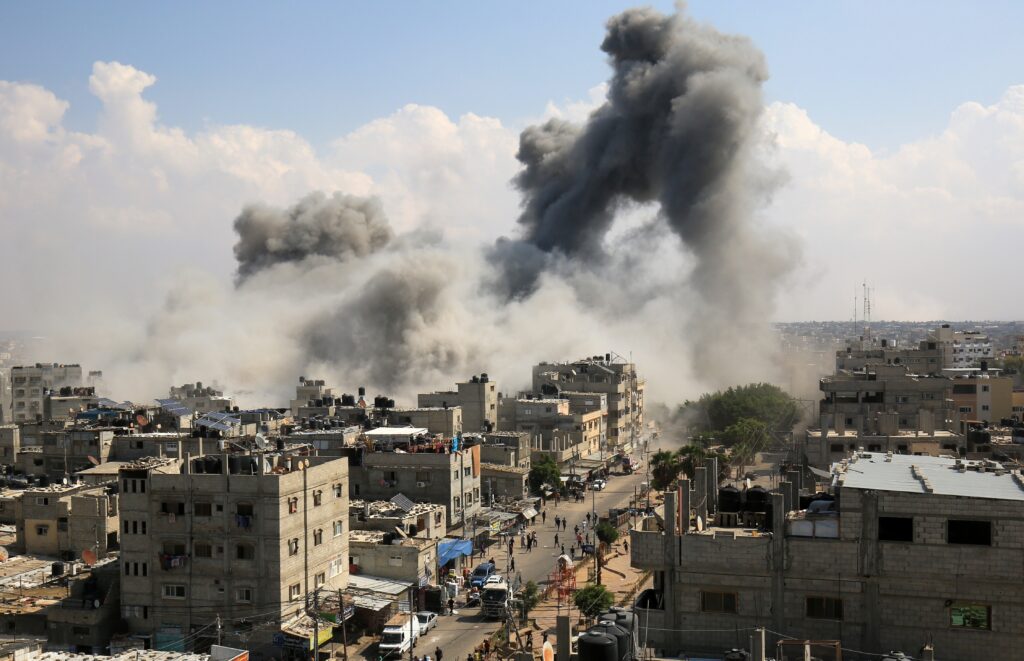
The IDF began airstrikes against Hamas on October 8, 2023 (Image: Shutterstock)
Throughout the war, Hamas has made numerous changes and revisions to its death toll. However, revisions to wartime death tolls are not unusual.
An extensive review of Hamas’ multiple revisions and changes to methodologies over the first 18 months of the war, published by the Washington Institute for Near East Policy in May 2025, stated that despite persistent problems with its methodologies and continued revisions, Hamas’ MoH reporting has, “improved significantly” since May 2024. However, the data remains incomplete and unverified.
Data released by the GMO remains completely false.
New findings from the review found:
- According to Hamas’ MoH, the war’s lethality was at its peak between October and December 2023, when an average of 312 deaths were recorded daily;
- This dropped to an average of 59 deaths per day between January 2024 and January 2025;
- Almost half of the death toll is adult men (49.3%). The review states, “In the 18–45 age range, men are 2.85 times more likely to have died than women, indicating a significant presence of militants”;
- Between January and March 2025, Hamas’ MoH made another change to how it reported deaths, separating recovered bodies, deaths caused by prior injury, new deaths, and updates from the judicial committee reviewing family reports;
- Uncounted deaths are likely, “of moderate size and skewed toward militants”. This means that claims that the ‘true’ civilian death toll is considerably lower or higher are false;
- Hamas’ MoH dramatically increased the amount of data – such as name, age, sex, birth date and ID – to each death record. However, there is no way to verify whether much of this data is correct, especially the IDs, as that information is kept confidential by the Palestinian Authority; and
- Hamas’ MoH has admitted there remains flaws with several thousand death record entries, with the possibility of more mass removals to be made in the future.
There have been numerous other reports and reviews of Hamas’ death toll, including the April 2025 analysis of Hamas’ data by Lewi Stone, a biomathematics professor at RMIT, and Gregory Rose, an international law professor at the University of Wollongong, stated that women and children actually accounted for less than 50% of all casualties in Gaza – and in some places, such as Khan Yunis, as little as 34% – despite comprising 75% of the population.
In addition, the data revealed that the MoH removed multiple mid-to-high-ranking Hamas casualties, which further distorted the death toll. In total, 6,300 names were removed, and this research raised strong doubt about claims of verification for some 15,000 casualties.
Stone and Rose added that multiple casualties resulting from friendly fire, misfired rockets and extrajudicial killings by Hamas terrorists were likely included in the death toll and misattributed to Israel.
In April 2025, US NGO Honest Reporting analysed changes to Hamas’ death toll data, revealing that Hamas had removed 3,400 previous entries listed as “identified deaths,” including more than 1,000 children.
In January 2025, the IDF estimated that the number of combatants it has killed was 20,000. It has not updated that estimate since.
The Honest Reporting report also revealed that Hamas was failing to follow its own rules to confirm deaths; Zaher al-Wahaidi, Hamas’ Director of the Health Information Centre in Gaza, said that all deaths needed to be confirmed by a judicial committee. However, Hamas’ own data showed that of the 6,583 family death reports, only 1,103 had been examined by a judicial committee.
Previously, Hamas conducted four major revisions to its data:
- April-June 2024: This increased, but didn’t finalise, the number of official ID numbers for entries, replacing placeholder IDs, adding in age, sex, date of birth and other information, and weeding out duplicate entries. Several thousand entries were modified, removed or added to the list in this period;
- June-August 2024: This again contributed to the ‘completeness’ of the list, with several hundred more official ID numbers replacing placeholder IDs, and several dozen entries removed;
- August-October 2024: Approximately 1,772 entries were removed, 75% of which came through the hospital/morgue system. This was prompted by an audit of hospital records following complaints by Gazans who had been falsely recorded as dead. Three hundred and eighty-two family reports were also removed, which were mostly made up of women, children and the elderly and had made up 55.5% of the March 2024 death toll list.
- October 2024-March 2025: Removal of 1,896 entries, 89% of which came from the self-report/Google Docs methodology. Hamas’ MoH said this came from vetting the self-reports, implying they had not been doing so beforehand.
Research from the Henry Jackson Society’s Centre for New Middle East, released in December 2024, revealed multiple serious errors in Hamas’ MoH’s death toll data, including:
- Men listed as women
- Adults listed as children
- Natural deaths listed as those caused by the war
- Deaths that occurred prior to the start of the war
- Deaths caused by Hamas listed as caused by the IDF
Examining the mountain of data, methodologies, revisions and reasons for those revisions, one cannot simply declare that Hamas is either being entirely truthful or deceitful. It is a deeply complicated situation that cannot – as has been shown in this fact sheet – be easily explained.
Despite the faulty methodologies and its refusal to distinguish between combatants and civilians, the repeated downward revisions of its own death toll indicates that Hamas’ MoH is making some effort to be accurate in its death toll data.
The same cannot be said for Hamas’ government media office, which is clearly ignoring death toll data from the MoH and reporting its own numbers with a clear emphasis on scoring propaganda points rather than accuracy.
Room must also be made to evaluate the role that media outlets across the world have played in blindly repeating Hamas’ death toll data. There has been a consistent failure to understand or report the serious issues relating to Hamas’ methodologies, the discrepancies between data from the MoH and government media office, a failure to properly report that Hamas does not differentiate between combatants and civilians, and – as will be discussed in detail further in this fact sheet – the fact that the United Nations does not verify Hamas statistics.
Read more: How many civilians are really being killed in Gaza?
Claims about women and children killed
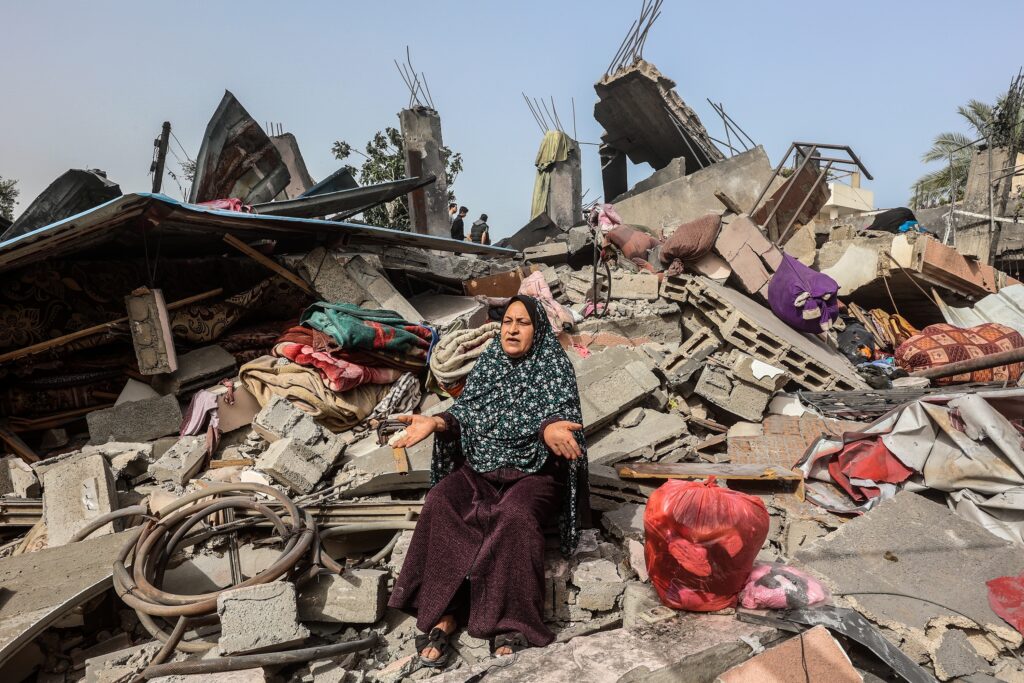
Hamas’ own data reveals it has deliberately inflated the number of women and children killed (Image: Shutterstock)
Since the outbreak of the war, Hamas has claimed that the overwhelming majority of people killed in Gaza – a figure of around 70% is often cited – have been women and children. This claim has been repeated extensively in the media as part of the argument that Israel is deliberately targeting Gazan civilians and committing genocide.
Gaza has an extremely young population; approximately half are under 18, with the remainder split evenly between men and women.
Hamas has deliberately exploited and endangered Gazan children for years – including in the current war – such as using them to transport ammunition and deliver messages across the Strip. For instance, the IDF discovered children carrying bags of vegetables laden with explosives.
Moreover, Hamas has also used Palestinian civilians, including women and children, as human shields in wars and conflicts since 2007. A 2019 report by the NATO Strategic Communications Centre of Excellence, states that this strategy has two components:
It is based on an awareness of Israel’s desire to minimise collateral damage, and of Western public opinion’s sensitivity towards civilian casualties. If the IDF uses lethal force and causes an increase in civilian casualties, Hamas can utilise that as a lawfare tool; it can accuse Israel of committing war crimes, which could result in the imposition of a wide array of sanctions.
Despite claims that women and children are over-represented in the death toll, Hamas’ MoH data – from as early as December 2023 – showed that, in a demographic analysis of 24,682 people reportedly killed, with their names and ages listed, 45.6% were men, 23.1% were women and 31.3% were children. Given that half of all Gazans are children, this reveals a significant under-representation of children in the death toll.
View this post on Instagram
There have also been significant discrepancies between the reported death toll of women and children by Hamas’ government media office and Ministry of Health, from the latter’s hospital and morgue data and the Google Docs self-reports. As Gabriel Epstein, then-research assistant at the Washington Institute’s Koret Project on Arab-Israel Relations, reported in late May 2024,
The gap is big enough that for the media office and Health Ministry numbers to line up, the number of men reported killed via the media reports methodology [over a specific period of some weeks] would have to be either minuscule or negative.
Read more: The Big Lie: “Genocide” in Gaza
The role of the United Nations
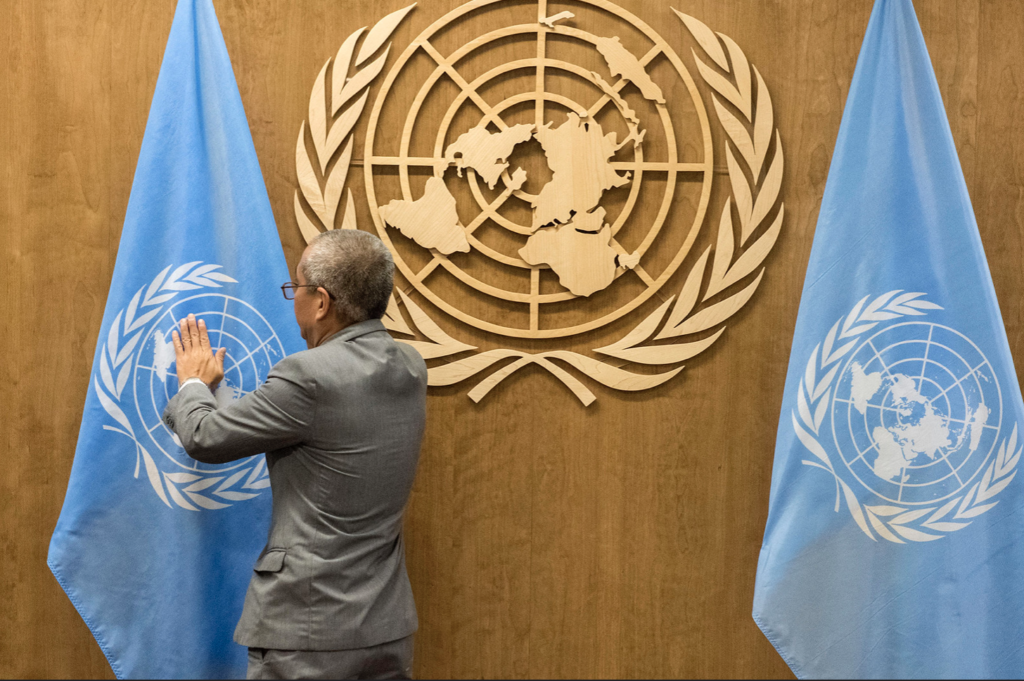
The UN has failed to verify Hamas’ death toll in Gaza (Image: Flickr)
The UN Office for the Coordination of Humanitarian Affairs (OCHA) repeats Hamas’ MoH’s claims in its own reports, without independently verifying the information. Epstein confirmed in email correspondence with AIJAC that neither OCHA nor any local or international NGOs conduct any real-time independent verification of Gaza’s death toll and, because Hamas doesn’t distinguish between civilians and combatants, neither does the UN. This is a dramatic departure from previous conflicts between Israel and Hamas, when OCHA independently provided real-time verification of death tolls.
It is not known why OCHA isn’t conducting real-time verification of Gaza’s death toll during this current war. However, there are three possible reasons: Hamas is refusing OCHA access; lack of capacity on OCHA’s part; or the scale of the war.
In mid-May 2024, the UN admitted that it had significantly overstated the number of children killed at the time, when it again used Hamas-supplied data. It corrected a March 2024 announcement that 13,450 children had died, revising it to 7,797 children – a 42% drop. The UN also revised its death toll for women, cutting it nearly in half, from more than 9,500 to fewer than 5,000. The UN did not explain its reason for doing so.
However, Epstein wrote at the time that it was:
neither a stunning rollback, as some claimed, nor an inconsequential shift, as others insisted. Rather, the adjusted numbers reflect a combination of UN missteps in evaluating conflicting information reported by Hamas-run authorities, non-transparent casualty-counting techniques and the difficulty of counting deaths in a chaotic urban conflict.
The UN’s decision to unquestioningly use Hamas’ death toll numbers is puzzling, given that as early as December 2023, the United Nations admitted that the Hamas government media office’s own methodology was “unknown”. Epstein added, “It is unusual for the United Nations, which normally uses a strict casualty verification standard, to report unverified casualty figures from involved parties.”
Despite its admission, the UN has also relied on Hamas’ government media office for death toll data, not its MoH, as discussed above, the media office is not reporting the MoH’s actual data, but has been making up its own numbers. The UN only stopped reporting data from the GMO in May 2024, although it continued to report claims about missing Gazans from the GMO until January 2025.
Number of Hamas terrorists and fighters killed

There were between 25,000 and 40,000 Hamas fighters at the start of the war (Image: Instagram)
It is not known exactly how many combatants Hamas had ready to deploy at the start of the war; estimates varied greatly, between approximately 25,000 and 40,000. However, it was known that Hamas had 24 battalions spread throughout the Strip. Although the overwhelming majority of Hamas fighters are adult men, Hamas has long recruited (and sometimes forced) children into combatant roles, including suicide bombers and soldiers.
It is also important to note that members of fellow terrorist group Palestinian Islamic Jihad, plus about half a dozen other terrorist groups – including Kataib Mujahideen, Nasser Salah al-Din Brigades, Abu Ali Mustafa Brigades, Omar Qassem Brigades, and Jihad Jibril Brigades – joined Hamas in the October 7 terror attacks. They have fought alongside Hamas ever since. Armed gangs have also engaged in the fighting. This significantly increases the number of combatants.
In addition, there have been reports that Hamas has recruited between 10,000 and 15,000 new fighters throughout the war.
The IDF has not confirmed what methodology it uses to calculate or estimate the number of Hamas and militant fighters killed in Gaza. However, the author of the Washington Institute report, Gabriel Epstein, told AIJAC that, based on statements from Israeli officials and his own analyses from various sources,
The IDF appears to rely on a combination of operational data, intelligence assessments and battlefield observations to estimate casualty figures, particularly those it identifies as militants.
The IDF only provides periodic updates on its estimates of combatant casualties. In August 2024, the IDF stated it had killed more than 17,000 Hamas operatives since the start of the war. In January 2025, that estimate increased to 20,000.
Epstein told AIJAC, “The IDF has claimed a civilian-to-combatant death ratio of approximately 1:1, attributing civilian casualties to Hamas’ practice of embedding military operations within civilian areas.”
According to the United Nations, civilians typically account for 90% of wartime casualties.
Epstein says that the IDF and Hamas are essentially counting different things and that trying to compare each set of data doesn’t yield helpful results. He told AIJAC:
The IDF is not collecting data on civilian casualties, at least not as far as I know, while the MoH is not distinguishing between civilians and militants and is likely missing a significant number of militants killed for practical (in tunnels, remote locations) and political (pressure from Hamas) reasons. For that reason, trying to shoehorn IDF estimates into the MoH figures, as some analysts do, or trying to use them to calculate an estimated civilian–combatant casualty ratio is doomed to fail (or at least to be pretty inaccurate).
Read more: Gaza protests not driven primarily by human rights concerns
Challenges in estimating war death tolls

“The fog of war” is often cited as the reason why it’s so difficult to obtain accurate war death tolls (Image: Shutterstock AI)
One of the reasons that trying to calculate or estimate the death toll from any war is so difficult is because of the reality that many parts of an affected landscape can become inaccessible because of active fighting, destroyed roads or bridges, power outages and more. It is also not unusual for some parts of a war-torn area to become physically isolated, sometimes for many months or even years.
There are three main causes for civilian deaths during war: direct or indirect violence; disease or starvation; and reasons that are unrelated to the war, such as from pre-existing conditions, old age, natural causes or accidents.
If a person dies due to a pre-existing condition or an unrelated disease, such as cancer, and this death was brought about or accelerated because they could not access treatment at a hospital or medical clinic due to the war, whether that death is counted as part of the war death toll depends on the methodology used.
According to an August 2023 University of North Carolina study about the ongoing Russia-Ukraine war:
Determining the number of casualties and fatalities suffered in militarized conflicts is important for conflict measurement, forecasting, and accountability. However, given the nature of conflict, reliable statistics on casualties are rare. Countries or political actors involved in conflicts have incentives to hide or manipulate these numbers, while third parties might not have access to reliable information.
Lead academic Prof Benjamin J Radford highlighted the enormous discrepancies in death toll data released by Russia’s and Ukraine’s respective defence ministries for the week of September 21, 2022. Then-Russian Defence Minister Sergei Shoigu reported that, at that time, 5,937 Russian soldiers had been killed during the war, while the Ukrainian Ministry of Defence reported that 55,510 Russian soldiers had been killed.
Accuracy – or getting as close to accurate as possible – also depends on the methodologies used. British medical journal Lancet published a study in January 2025 claiming that the Gaza death toll for the first nine months of the war could be 41% higher than what Hamas’ MoH reported. By June 30, 2024, Hamas’ MoH claimed the death toll was 37,877; the Lancet-published study claimed that it could be 64,260.
Prof Abraham Wyner, Professor of Statistics at the University of Pennsylvania, responded to the study, stating that its researchers’ choice of methodology “raise[s] significant concerns about the reliability and accuracy of its conclusions.”
In this response, we show that this surprisingly large estimate has two causes: 1) a methodological problem and 2) the inclusion of a relatively small but highly influential subset of bad data. We propose an alternative estimate of the undercount that is substantially lower: only 7.8 thousand. We also project a combined total population of decedents, civilians and combatants, that closely matches the total reported by Gaza’s Ministry of Health.
“The fog of war” – confusion caused by the chaos of war – is often cited as a genuine reason for the inability to accurately calculate or estimate a war’s death toll. This occurred during the Syrian civil war, when, in 2014, the United Nations admitted it had given up trying to estimate how many people were being killed in Syria. That war would continue for another 10 years.
Read more: The Media and the Israeli-Palestinian Conflict/Implications of the death of Ziad Abu Ein
Comparison to how the October 7 death toll was confirmed
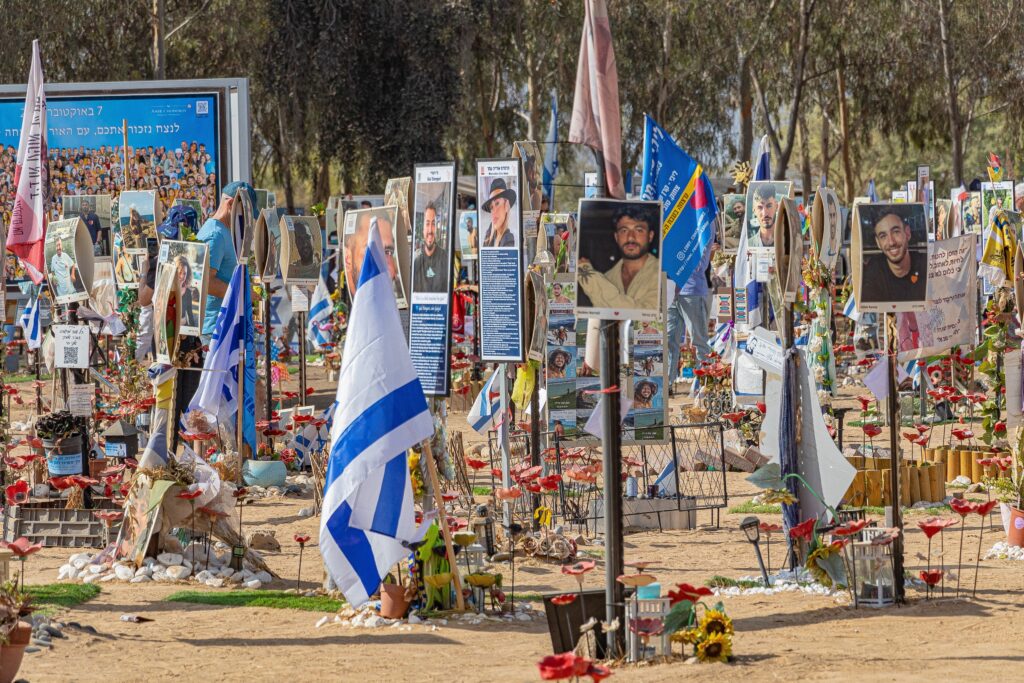
A memorial to the victims of the October 7 massacre at the Nova music festival (Image: Shutterstock)
In the days and weeks following the barbaric October 7 terror attacks, there were multiple inaccurate media reports about the possible death toll. This, in itself, is not unusual, given the extraordinarily chaotic nature of the tragedy and the days and weeks that followed.
Israeli authorities quarantined the crime scenes of the multiple massacres – which included kibbutzim, homes, military sites, a music festival and wide stretches of roads – to collect bodies and evidence. It still took several months for medical personnel to confirm the final death toll, and even longer to formally identify the victims.
Anthropologists and archaeologists from Australia, Switzerland, the United States and New Zealand travelled to Israel to assist with the difficult task of sorting through the enormous amount of remains, some of which were whole bodies, others were as small as just 15 grams of skull fragment. Some bodies were so badly burnt or decomposed that they no longer resembled humans, nor could they be identified by DNA.
It wasn’t until January 2024 that all but one of the victims had been counted and identified.
This demonstrates the very real challenges and the length of time required for experts to undertake the painstaking work of counting and identifying victims of war.
Compare this to Hamas’ MoH, which frequently swiftly makes claims about death tolls; for example, following an explosion in the al-Ahli Arab Hospital car park on October 17, 2023, which Hamas immediately blamed on an Israeli air strike, but was later found to have been caused by an Islamic Jihad rocket that misfired from within Gaza. Hamas straight away claimed that about 500 people had been killed. It only took two days for European and US intelligence to revise down the estimate to between 50 and 300.
Other resources

Some of the cars that Hamas attacked on October 7 and whose occupants they murdered (Image: Shutterstock)
- Assessing the Gaza Death Toll After Eighteen Months of War (May 2025)
- Washington Institute report (March 2024)
- Henry Jackson Society report (December 2024)
- Lewi Stone and Greg Rose report (April 2025)
- Honest Reporting report (April 2025)
- Estimating conflict losses and reporting biases
- Analysis of new death data from Gaza’s Health Ministry reveals several concerns
- The adjusted numbers reflect the many challenges of counting deaths in a chaotic urban conflict
- How the Gaza Ministry of Health fakes Casualty numbers
Tags: Gaza, Hamas, IDF, Israel, Palestinians


